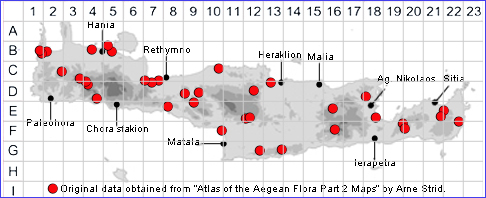SPECIES DESCRIPTION
MENTHA PULEGIUM
Family and Genus:- See- LABIATAE/Sect. PULEGIUM
Common Names:- Pennyroyal
Homotypic Synonyms:- Melissa pulegium, Mentha aromatica, Mentha
pulegium subsp. vulgaris, Mentha pulegium var. vulgaris, Minthe pulegia
Pulegium vulgare.
Meaning:- Mentha (Gr) A name used by Pliny for mint.
Pulegium (L) Flea-dispeller, Roman naturalist and natural philosopher
Pliny's name for a plant whose burning leaves kill fleas.
General description:- Perennial with a far-creeping rhizome, whole plant sub-
glabrous to grey-tomentose, strongly pungent.
Stems:-
1) Ascending to erect, 10-40 cm, sparingly branched, with scale-like leaves below.
Leaves:-
1) Middle and upper cauline, short-petiolate, blade usually narrowly obovate, entire
or shallowly dentate.
2) Floral leaves, like the cauline but smaller.
Flower:-
1) Verticillasters, several, many-flowered, distinctly separated, forming a long,
nanow spike.
2) Calyx, (2-)2·5-3 mm, hairy in the throat, weakly 2-lipped with unequal teeth. the
lower subulate.
3) Corolla, 4.5-6 mm, pinkish-mauve to lilac.
4) Stamens, slightly exserted..
Fruit:-
1) Nutlets, 0·75 mm, pale brown.
Key features:-
1) Stems, not mat-forming, though sometimes procumbent.
2) Leaves, 8-30 mm; hairy at least beneath.
3) Corolla, 4-6 mm.
Habitat:- Seasonally wet meadows, lake margins, coastal habitats, fallow fields
and dolines. 0-800(-1300) m.
Distribution:- Widespread throughout the Mediterranean but scarce in the N.
Mediterranean area. Sparsely scattered across Crete.
Flowering time:- May-Sept.
Photos by:- Steve Lenton

